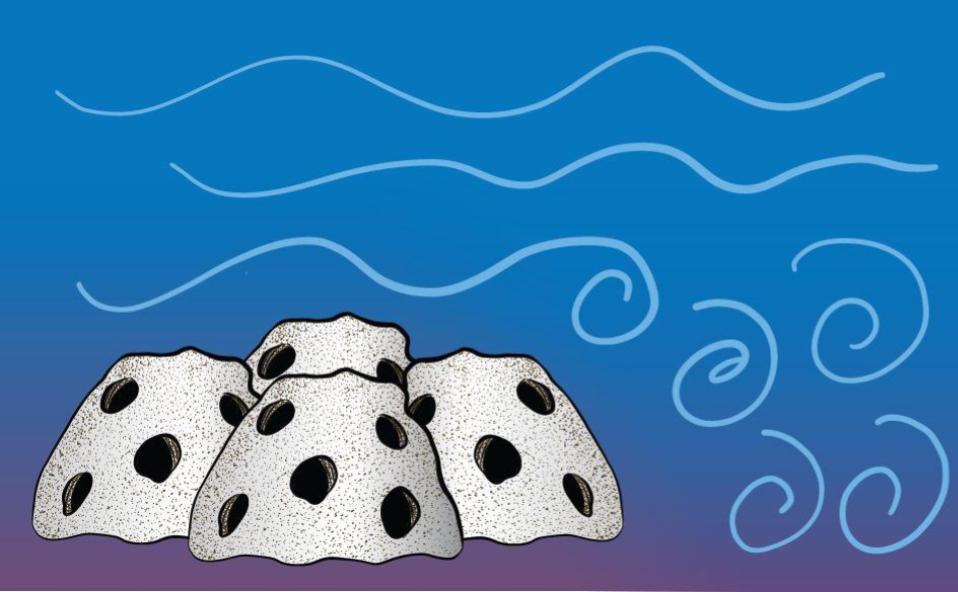 The Chesapeake Bay Foundation (CBF) today began a first-of-its kind experiment in Maryland: build and monitor a giant man-made oyster reef to test whether such reefs can break up dead zones of low oxygen. The project is part of the Chesapeake Oyster Alliance initiative to add 10 billion new oysters to the Chesapeake by 2025.
The Chesapeake Bay Foundation (CBF) today began a first-of-its kind experiment in Maryland: build and monitor a giant man-made oyster reef to test whether such reefs can break up dead zones of low oxygen. The project is part of the Chesapeake Oyster Alliance initiative to add 10 billion new oysters to the Chesapeake by 2025.
“We know historic oyster reefs grew up into the water column. They likely looked more like mini Manhattan skylines than the flat oyster beds we think of today. This project will test whether man-made oyster reefs with vertical structure agitate currents and break up dead zones” said CBF Maryland Fisheries Scientist Dr. Allison Colden.
CBF today deployed the first of 240 concrete reef balls at a site above the Rt. 50 Severn River Bridge. The balls are only two-feet tall, but they might offer enough resistance to existing river currents to create turbulence, and increase dissolved oxygen. Traditional oyster reefs would have grown much higher, but those were knocked down over many decades of oyster harvesting.
CBF will monitor the reef through the summer, in partnership with the University of Maryland Center for Environmental Science (UMCES) and the Naval Academy.
Research already has demonstrated that oyster reefs with vertical structure create rich habitat for fish and other marine life, and also filter water. This reef project will test whether such reefs offer the additional benefit of breaking up low-oxygen zones where fish and other creatures can’t live.
The site of the project is called Winchester Lump. It is a rise in the river bottom where an historic oyster reef once existed. In the summer oxygen levels plunge at the Lump as they do in many areas around the Bay as algae blooms fed by nutrient pollution die off and rob the water of oxygen. Dr. Andrew Muller of the Oceanography Department of the U.S. Naval Academy, and CBF Senior Naturalist John Page Williams have documented hypoxia at the site. With concrete balls added to the top of the Lump, the reef may achieve enough height to agitate currents, and increase oxygen levels.
The reef balls also were set with an estimated 400,000 baby oysters at CBF’s Oyster Restoration Center in Shady Side. CBF has been using the concrete balls for years as an artificial home for oysters. Larvae attach themselves to the concrete much like they would to traditional reefs made of old shell. While mortality is an expected feature of all oyster reefs, other man-made reefs in the Severn River have survived and thrived.
The main difference in this reef project, however, is that sophisticated underwater equipment provided by UMCES will monitor the impact of the 240 balls on currents. CBF also will monitor for dissolved oxygen and other conditions at the reef during the summer when hypoxia, or low oxygen, is typically at its worst. Those results will be compared to monitoring data taken prior to reef construction.
The Chesapeake Oyster Alliance is a broad partnership designed to spark governmental action, public attention, and funding to accelerate ongoing oyster restoration efforts in the Chesapeake Bay. The ambitious goal of this collaborative effort is to add 10 billion new oysters by 2025 in Virginia and Maryland waters.
The Winchester Lump project not only will add potentially 400,000 oysters to the Alliance goal, but could create significant motivation to accelerate oyster restoration in the Chesapeake given the multiple benefits of oyster reefs.



Chris Kayhoe says
How much does 1 oyster ball cost and how big are the 400,000 oyster you planted cost? What is the projected cost of 10 billion oyster ?